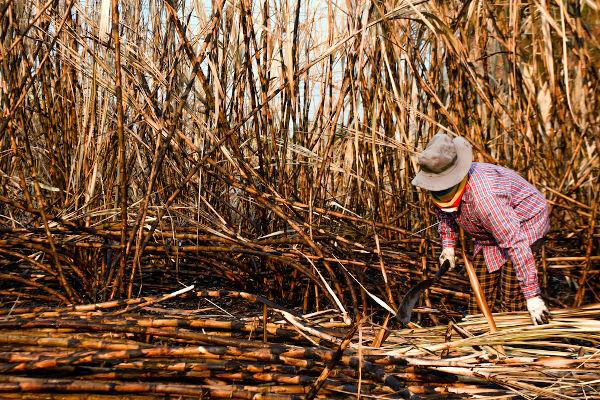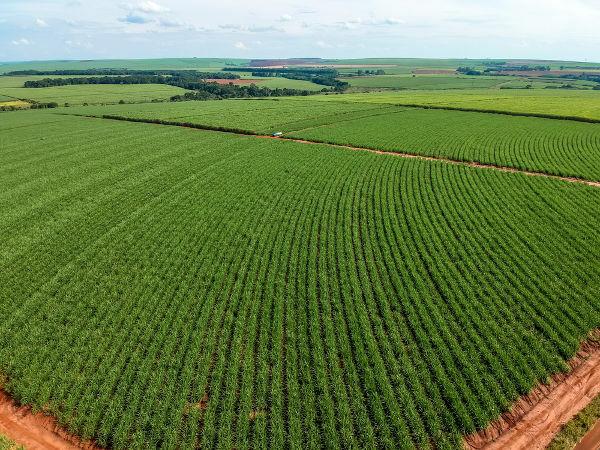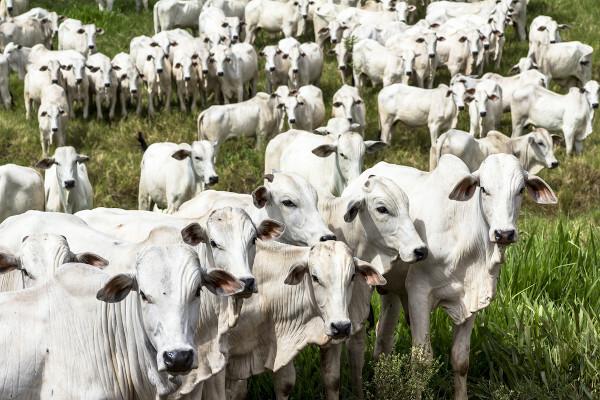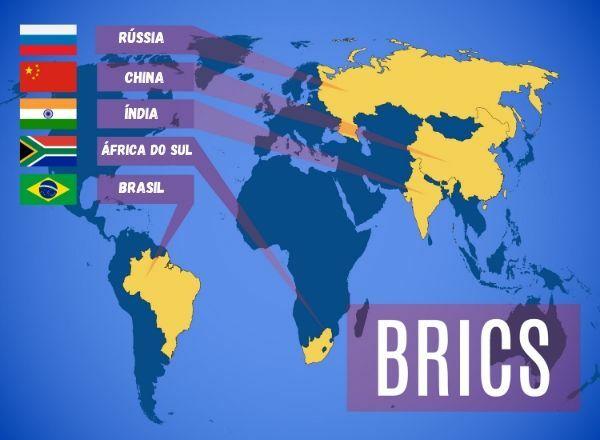THE history of Brazil's economy it is also the history of Brazilian society. Understand our economic past it is to understand how we are formed as a society, people, territoriality. According to the International Monetary Fund, in 2019, Brazil ranked ninth in the ranking world economic. However, being in the top 10 in relation to the Gross Domestic Product (GDP) worldwide does not mean being a rich and developed country. This is what history guarantees us. The Brazilian economy was created in the context of export appreciation, with low development index on national soil.
Read too: Difference between export and import
Brief history of Brazil's economy
The Brazilian economy was shaped based on the European man's mercantile thinking of the fifteenth century, a man eager for adventure, enrichment and power. His adventurous spirit made him cross the Atlantic Ocean in favor of new conquests and territories, going further than he had ever gone before. However, these feelings were not transferred to the society that would come years later, as all this thirst for profit belonged to the European.
When they arrived here in 1500, Europeans did not initially find gold and other precious stones. The contact with the natives was one of amazement and surprise, as in any occasion when one arrives in an inhospitable place, in unknown lands.
THE absence of precious stones made the Portuguese look at the exuberant Atlantic forest on the northeastern coast, in the current lands of Bahia. This forest was filled with a very common tree in the forests of the East: the Pau-Brasil, so important and abundant that it named the territory it inhabited with expressiveness.
This tree was removed from the native territory with the help of the inhabitants who lived here and who they did not know the "white man", so called in historical literatures because of his apparent lack of melanin. Later, this help became a great slavery, followed by village massacrewho demonstrated resistance.
The removal of the tree took place through an exchange: the European “gifted” the native with mirrors, beads, jewelry and the like, and the native helped him in what would be the first logging of Brazilian history and the first economic activity practiced here.
The brazilwood that left the Northeast was sold in the Europe and in other parts of the world. The exchange between Portuguese and natives was called barter, an extremely stressful action for the natural inhabitants of this territory.
Years later, still in the 16th century, a second activity was introduced: the sugarcane planting, which was made possible thanks to tropical weather and fertile soil in the Northeast of the country. Sugar, at that time, was considered a "White gold", size was its value. These were times of development of the first urban agglomerations, with emphasis on the territory that is now the current state of Pernambuco. Recife and Olinda were cities where the sugarcane plantation was a success.

Northeastern sugar was produced with African black slave labor and exported. At the same time as planting, cattle were cultivated, a kind of parallel economic activity that, five centuries later, would make Brazil the largest producer of beef for consumption in the world.
In the following century, with the drop in sugar production and the discovery of gold in the Southeast of the country, where the state of Minas Gerais is located today, Brazil sees in the gold production another profitable activity that lasted for almost 100 years. A relatively short time, but it made possible the enrichment of many people and cities.
In the 19th century, the predominant economic activity was the coffee plantation and production. This Asian plant was the locomotive of the Brazilian economy in imperial times, being fundamental for the emergence of the economic sector that would develop in the last century: the industrial sector.
The coffee enabled the accumulation of capital in the Southeast, favoring large private investments in industrial activity, which was still incipient. The coffee crisis in the 1920s was the spark for the Brazilian industrialization, which continues to expand.
Do not stop now... There's more after the advertising ;)
Main economic activities in Brazil today
Southeast region
THE Brazilian industrialization peaks in the 1950s, being initiated, decades earlier, in the region ssoutheast. This peak reached, mainly, this region in a positive way, as it was in it that the best infrastructure conditions were for the installation of factories and industrial clusters, in addition to the accumulation of capital provided by coffee production in the century previous.
The Southeast region has a large industrial park, mainly in São Paulo, in the metropolitan region (ABC Paulista region — Santo André, São Bernardo do Campo and São Caetano, industrial cities), and in the Rio de Janeiro, with the oil industry. It also has important mineral resources, such as iron and manganese, found in Minas Gerais, in the Iron Quadrangle. These minerals are exported around the world via the Port of Tubarão, in Espírito Santo.
Petroleum, sugar cane and sea salt they are also present in the region's economy. Today, the state of Rio de Janeiro is the largest oil producer in the country, followed by Espírito Santo, and the second largest of salt, behind Rio Grande do Norte. The state of São Paulo has the largest sugarcane cultivation in the country, being an international highlight, as Brazil is the second largest ethanol producer in the world, behind the United States.

South region
At the sul from the country, there are highlights in several Brazilian economic sectors. As it is a well-developed region in terms of technology and industry, areas in which these two aspects come together are very common, as in large-scale animal husbandry.
The southern region is a leader in the creation of swine and poultry in Brazil, having the largest herds in both categories, according to the IBGE Automatic Recovery System (Sidra).
The climatic conditions of the region as well as the fertile soil favor agriculture, with emphasis on the corn production in Paraná, of apples in Rio Grande do Sul and Santa Catarina, in addition to the cultivation of grape, which is striking in the northeast of Rio Grande do Sul.
already the activitiesindustrial are related to the production of raw materials, such as textiles, dairy products, slaughterhouses, grains etc. The most industrialized state is Rio Grande do Sul, with large industrial complexes in the metropolitan region of Porto Alegre.
See more: Informal work - sector that generates a lot of movement in the Brazilian economy
Northeast region
At the North East, the highlight is for the Wood zone, which corresponds to a region that covers the entire northeastern coast, from Rio Grande do Norte to southern Bahia. This sub-region has the largest concentration of people, having the largest number of large cities, such as Salvador, Recife and Natal.
Among the economic activities, we can mention the tourism, shopping centers, oil production (both on land and sea, on the continental shelf), the sea salt production (Rio Grande do Norte) and the industrial activities, such as the industrial hub of Camaçari, on the coast of Bahia. Also noteworthy is the cocoa production in Bahia, responsible for more than 60% of the production of this fruit in Brazil.
Midwest region
In the Midwest, the state of Mato Grosso has a strong livestock presence in the economy. According to Brazilian Institute of Geography and Statistics, in 2018, Brazil had 213,523,056 heads of cattle. Of this total, 73,838,400 were located in the Midwest, with more than 30 million in Mato Grosso alone.
In general, the creation is intensive and extensive, that is, there is the presence of technology and confined cattle, as well as the creation of free-range cattle. Generally, extensive cattle raising is practiced in the Pantanal areas of Mato Grosso, and intensive cattle raising is quite common in Goiás and Mato Grosso do Sul.

At industries are present mainly in Goiás and in the south of Mato Grosso do Sul due to the proximity to the Southeast. In the state of Goiás, we can highlight three large industrial centers in the region: Anápolis, with the Agroindustrial District of Anápolis (Daia); Aparecida de Goiânia, which owns the Agroindustrial District of Aparecida de Goiânia (Daiag); and the capital Goiânia, with important pharmaceutical and beverage industries.
North region
In the North of the country, a recently populated region, some government agencies responsible for its economic stimulus in the 1960s. Among them we can highlight the Superintendence for the Development of the Amazon (Sudam) and the Superintendence of Manaus Free Zone (Suframa).
The latter corresponds to a large industrial pole, conceived in 1967 and located in Manaus, which is home to large multinationals, providing enormous industrial development and job creation for the region.
This hub concentrates three types of activities: commercial, agricultural and industrial (the strongest of all). According to Suframa, there are more than 600 industries in the center and a generation of more than 500 thousand jobs, direct and indirect. The areas of industrial production that stand out are: electronics (cell phones, TVs), two wheels (motorcycles) and chemistry (production of raw material for soft drinks).
Read more: Industry locational factors - criteria that determine industrial distribution
Brazil economy statistics
To arrive at the data presented below, the International Monetary Fund portal was consulted, this portal which contains data from all countries inscribed in this fund, with a lot of fidelity to numbers and statistics economical.
• GDP: approximately 1.9 trillion dollars in 2018.
• GDP per capita: 8817 dollars, in 2018.
• Central bank interest rate: until the month of May 2020, the interest rate charged by central banks in Brazil was 3% per month. Twenty years earlier, in 2000, this rate was 18.5%.
• Coin: since 1994, Brazil has used the real, the currency created during the government of Itamar Franco. This currency came to be worth the same amount as the dollar, used in international transactions. According to the IMF, until May 2020, US$1 was worth the same as R$5.08.
• Minimum wage: in 2020, the minimum wage in Brazil was quoted at R$1045, an increase of 52 reais, compared to the previous year.
• Unemployment: in 2018, the unemployment rate in Brazil was 11.6% of the entire Economically Active Population (PEA). In 2019, the index dropped to 11%, with a slight reduction. However, until April 2020, due to the pandemic of COVID-19, this index was at 12.6%
• Taxes on workers' income: this index calculates the percentage of tax withheld from workers' income. Since 2003, 27.5% of labor income has been converted into tax, that is, 27.5% less on Brazilians' purchasing power.
See too: HDI – measure of a country's development
Business blocks/groups
BRICS – is an economic group formed by Brazil, Russia, India, China and South Africa (southAfrica). The group name is a combination of the first letters of each country. This group brings together countries with great industrial potential and an emerging economy. Together, the GDP of these countries exceeds 19 billion dollars, surpassing the European Union and the United States of America.

• G20 – group that brings together the 19 richest countries in the world and the European Union.
• IMF – International Monetary Fund, a kind of world bank that helps countries in the midst of an economic crisis.
• Mercosur– Created in 1991, this economic bloc brings together six member countries: Brazil, Argentina, Uruguay, Paraguay, Bolivia and Venezuela. It seeks to facilitate trade among its members, with Brazil as the main leader.
• OAS– Organization of American States, formed by all the countries of America. This organization debates social and political issues in its member countries.
• UN – United Nations Organization, created in 1945, of which the country is a signatory member, that is, it signed the declaration that gave rise to the organization.
• Unasur – Union of South American Nations, created in 2004, is formed by all the countries of South America, with the objective of creating a free trade zone between those involved.
Evolution of GDP in the last 10 years
When comparing the Brazilian GDP over the last 10 years, we see that, in 2008, we had the worst performance. This fact was due to the crisis that hit all nations that year, some more incisively, others less so, as was the case in Brazil. The best year was in 2011, thanks to income transfer policies maintained and improved by the government at the time, in addition to clear signs of economic recovery on the world stage.
YEAR |
VALUE OF GDP (dollars) $ in millions |
Change in GDP (%) |
2018 |
1,867,818 M |
1,3% |
2017 |
2,052,807 M |
1,4% |
2016 |
1,795,365 M |
-3,3% |
2015 |
1,799,882 M |
-3,5% |
2014 |
2,456,111 M |
0,5% |
2013 |
2,471,529 M |
3,0% |
2012 |
2,464,377 M |
1,9% |
2011 |
2,613,979 M |
4,0% |
2010 |
2,207,602 M |
7,5% |
2009 |
1,667,666 M |
-0,1% |
2008 |
1,694,860 M |
5,1% |
By Attila Matthias
Geography teacher


